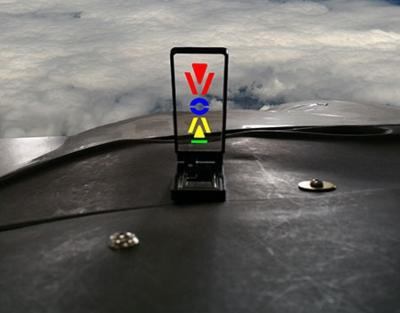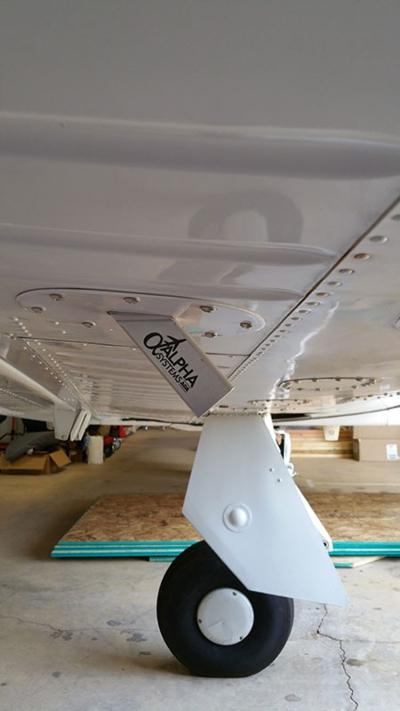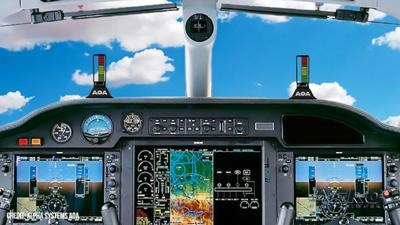Loss-Of-Control Accidents, Often Stemming From An Aerodynamic Stall, Remain The Leading Cause Of Fatal Incidents In GA
By: Gene Yarbrough
One of the benefits of a small airshow is the intimate contact with the people and vendors attending.

The first annual Affordable Flying Expo afforded in depth conversation with Mark Korin of Alpha Systems, who manufactures industry leading Angle of Attack systems for light general aviation aircraft. His commitment to superior quality and enhanced aviation safety are exceedingly evident to all who visit him.
Loss-of-control accidents, often stemming from an aerodynamic stall, remain the leading cause of fatal incidents in general aviation (GA). While pilots are taught the theory of angle of attack (AOA), they are traditionally forced to rely on airspeed as a proxy for lift margin, a method fraught with variables like aircraft weight, bank angle, and G-loading. The Alpha Systems Angle of Attack indicator fundamentally transforms this dynamic, offering pilots a direct, reliable measure of wing performance and serving as a crucial safety enhancement.
An AOA indicator measures the angle between the wing's chord line and the relative wind. Since an aircraft's wing always stalls at the same critical angle of attack, regardless of airspeed, weight, or configuration, the Alpha Systems unit provides an unambiguous, real-time warning when that critical threshold is approached. This enhances pilot situational awareness regarding the available lift margin, making the "invisible" AOA visible. The intuitive display, often a simple light bar or chevron system, allows pilots to quickly interpret stall proximity during critical phases of flight, such as takeoff, climb-out, and the landing approach, where margins are thinnest.

This safety mission is the driving force behind Alpha Systems founder and CEO, Mark Korin. A passionate pilot and inventor, Korin is profoundly dedicated to saving lives in the GA community. He recognized the gap between sophisticated military and commercial AOA systems and general aviation's traditional, less precise methods. His mission has been to develop affordable, high-quality, intuitive AOA indicators to solve the "most pressing problem" of stall/spin accidents. Korin's dedication has been further reinforced by personal experiences, strengthening his belief in the importance of his work.
Despite the clear safety advantages and strong recommendations from bodies like the NTSB and FAA, getting the broader pilot community to fully recognize and adopt AOA indicators has been an uphill battle. Many pilots, having relied on airspeed indicators for decades, find it difficult to shift their mindset and trust a different instrument. Korin has faced the challenge of overcoming this reluctance and the ingrained habit of equating speed with lift. The initial lack of standard AOA displays in legacy certified cockpits and the perception of them as "just another gadget" further slowed adoption.
However, through persistent advocacy and innovation, including integration with modern glass panels and simplified FAA installation procedures, Mark's message is gaining traction. By providing clear, objective data on the wing's performance, the Alpha Systems AOA indicator empowers pilots to fly more precisely, safely utilize the aircraft's full lift capability, and, most importantly, avoid the deadly surprise of an unintentional stall.
Alpha Systems AOA indicator systems have received FAA NORSEE approval (Non-Required Safety Enhancing Equipment) and can be installed on any aircraft as a minor modification, only requiring a logbook entry by the installing mechanic. The light aircraft community has no excuses for resisting the single most beneficial piece of equipment available that will greatly increase their safety and vastly improve their piloting skills.



 Aero-News: Quote of the Day (11.20.25)
Aero-News: Quote of the Day (11.20.25) ANN's Daily Aero-Term (11.20.25): Overhead Maneuver
ANN's Daily Aero-Term (11.20.25): Overhead Maneuver ANN's Daily Aero-Linx (11.20.25)
ANN's Daily Aero-Linx (11.20.25) NTSB Prelim: Just Highlander
NTSB Prelim: Just Highlander Classic Aero-TV: Just Like The 'Real' Thing Redbird/Disneys Dusty FlightSim
Classic Aero-TV: Just Like The 'Real' Thing Redbird/Disneys Dusty FlightSim







